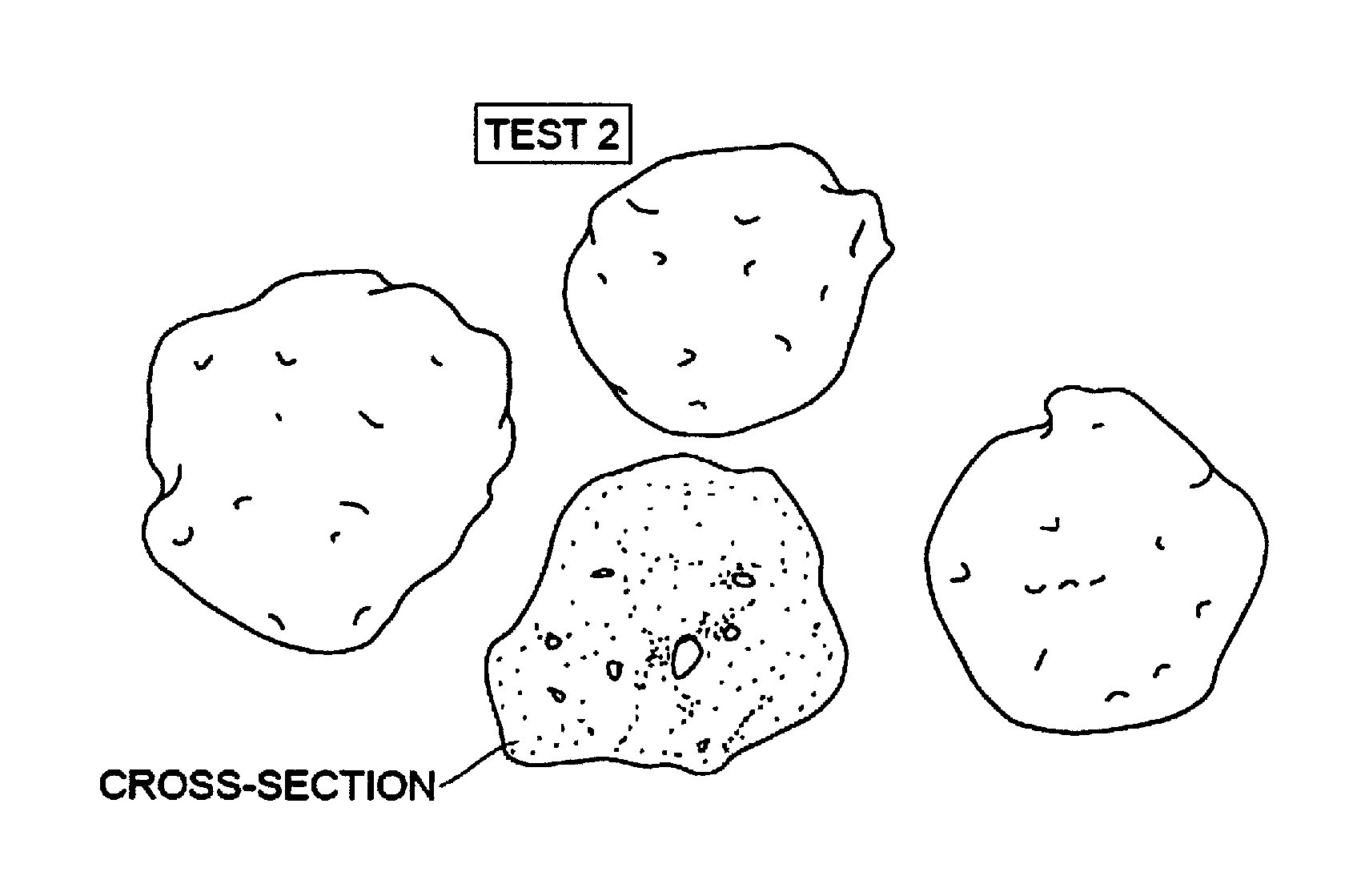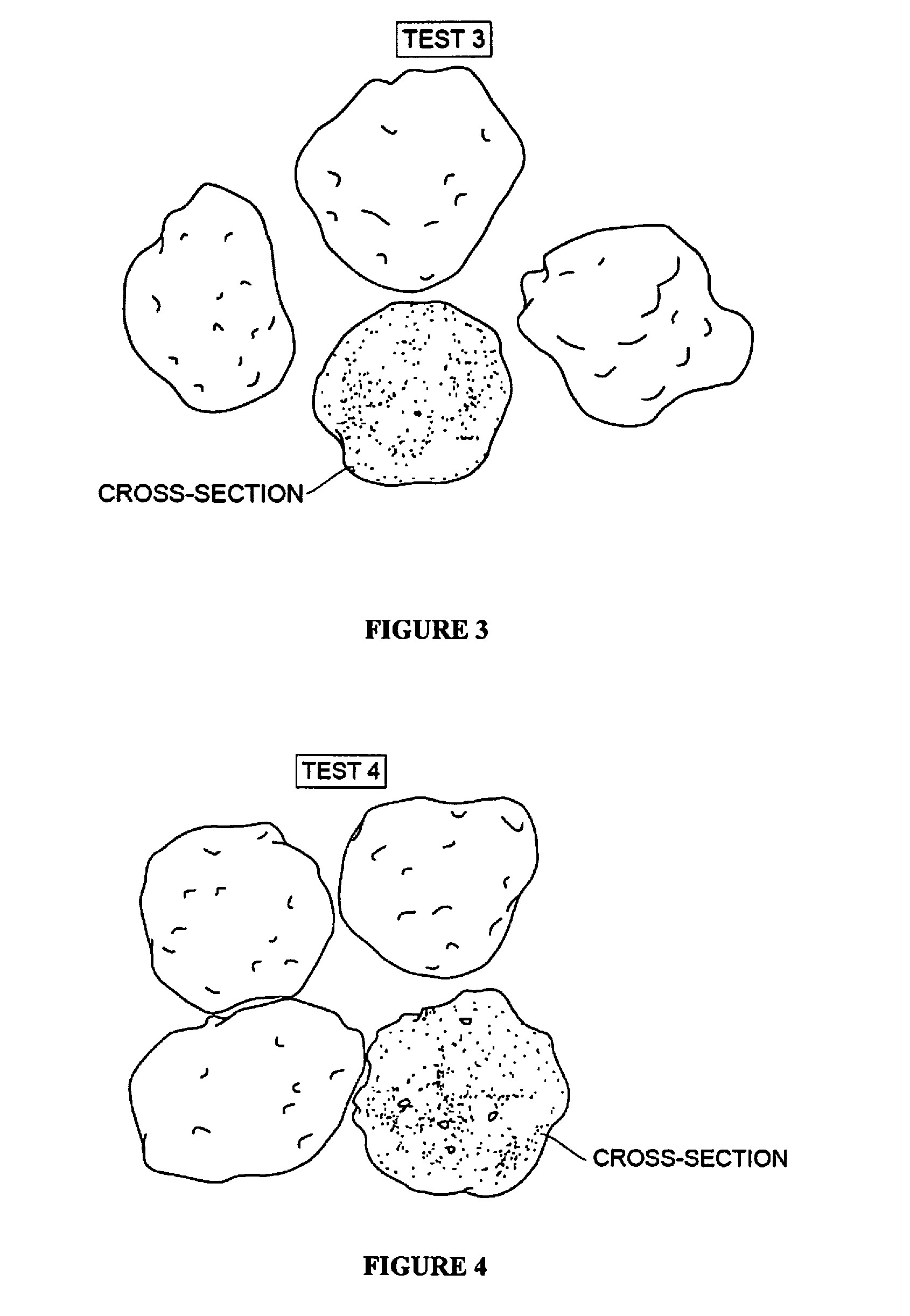Fertilizer composition incorporating fibrous material for enhanced particle integrity
a technology of fibrous material and fertilizer composition, which is applied in the direction of nitrogenous fertilisers, alkali orthophosphate fertilisers, animal corpse fertilisers, etc., can solve the problems of affecting the quality of fertilizer, so as to reduce the formation of dust, prevent or reduce the formation of attrition or dust formation, and increase the granule strength
- Summary
- Abstract
- Description
- Claims
- Application Information
AI Technical Summary
Benefits of technology
Problems solved by technology
Method used
Image
Examples
example 1
Bench Top
Preparation of Test Product
[0030]Each of the four compositions was produced using pilot plant conditions on the bench in a pan granulator. The test products were generally produced by first charging a granulator with elemental sulfur dust and recycle fines of MAP followed by the distribution of a pre-neutralized slurry (pH—2.4-2.6) composed of ammonium sulfate, fibrous material (in the three test samples), and 40% P2O5 phosphoric acid onto the rolling bed of the granulator. The material was then injected with anhydrous ammonia using a gas sparger until a product pH of about 4.2 was achieved. The resulting products comprises about five weight percent elemental sulfur and about five weight percent sulfate sulfur in a MAP-based formulation. The baseline product was also produced in a similar manner, but without inclusion of the fibrous material in the pre-neutralized slurry.
[0031]More particularly, approximately two pounds of granular product for each test product was produced...
example 2
[0046]During pilot plant preparation of MES 10, material similar to Test #2 was prepared by the addition of paper fiber such that the paper fiber was about two weight % of the final product. The product was examined to determine if it provided additional stability to the product, to prove the results from earlier pan granulation tests. Particularly, waste paper fiber from a recycling plant (49% moisture; normally land filled) was obtained, milled with a hammer mill, and screened to remove any unwanted materials, such as oversize, needle parts, rubber, etc. These paper fibers can react violently with phosacid, thereby frothing excessively, which can in turn cause problems with pumping including pump cavitation and plugging of slurry lines. Therefore, the paper fibers were added as a water slurry to the granulator at a location near where partially ammoniated phosacid slurry is sprayed.
[0047]Due to the thixotropic nature of this paper fiber, the maximum pu...
PUM
| Property | Measurement | Unit |
|---|---|---|
| weight percent | aaaaa | aaaaa |
| weight percent | aaaaa | aaaaa |
| weight percent | aaaaa | aaaaa |
Abstract
Description
Claims
Application Information
 Login to View More
Login to View More - R&D
- Intellectual Property
- Life Sciences
- Materials
- Tech Scout
- Unparalleled Data Quality
- Higher Quality Content
- 60% Fewer Hallucinations
Browse by: Latest US Patents, China's latest patents, Technical Efficacy Thesaurus, Application Domain, Technology Topic, Popular Technical Reports.
© 2025 PatSnap. All rights reserved.Legal|Privacy policy|Modern Slavery Act Transparency Statement|Sitemap|About US| Contact US: help@patsnap.com



